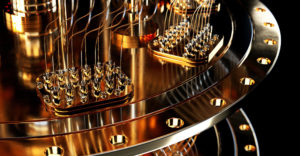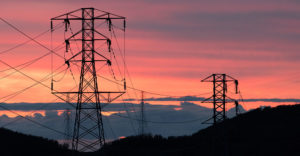
It may be an increasingly digital, electronic and paperless world, but that doesn’t mean it doesn’t use a lot of energy. In particular, data centers — those places that store, maintain, and manage all the bits and bytes that keep things humming — use tremendous amounts of energy. Greening these centers, therefore, is one of the top priorities for many businesses.
In fact, the desire to save energy with data centers is nothing new; ever since data centers were created, businesses have sought ways to lessen their energy usage, both for the cost savings and because, in some areas, there’s just no more power to be had. Greening data centers, however, is not so much a quick fix as it is a gradual process of making them ever more efficient through the implementation of new technologies, measurement methods and monitoring systems.
“It’s not an endpoint — it’s more a journey,” David Gelardi, VP of systems and technology at IBM, told TechNewsWorld. “It’s a constant journey of evaluating, looking toward the future, and figuring out where you’re going.”
It’s not just about the environment, either. Energy saved is money saved, after all, and money is always a primary incentive for businesses.
“We’re lowering our power bills, so our cost goes down,” Doug Alger, an IT architect with Cisco Systems, told TechNewsWorld, referring to his company’s ongoing efforts to make its data centers more energy-efficient.
Earlier this month, it opened a new green data center in Allen, Texas.
“A lot of these [energy efficiencies], we’ve been doing for years. Even if you don’t care about the environmental benefits, it’s just a good thing to do.”
In other words, “green” is just a label for a whole host of changes that can be beneficial to an organization and its data centers.
“You can take the green label off, and there are still reasons we’d want it to be this way,” said Alger. “Overall, we want to lessen our carbon footprint.”
Measuring the Footprint
The standard for measuring energy efficiency in any data center is the Power Usage Effectiveness, or PUE, metric. This metric is essentially a ratio of how much power comes into a facility vs. how much is used by IT.
“The lower that ratio, the better,” explained Gelardi.
For traditional data centers, the average PUE number has been about 2.0, but as they get greener, the goal has been to push the PUE closer to 1.0. PUE is influenced by many factors: the efficiency of the hardware; the size of the center; the types of servers and their uses; the proficiency of monitoring software; the building’s architecture; the climate outside the facility; and a number of others.
IBM has a green data center in Poughkeepsie, N.Y., that it uses to show clients the latest advances in green technologies. The center has features such as a “rear door heat exchanger,” which uses water from the Hudson River to cool the computer rooms.
It also uses precise monitoring software to find “hot” and “cool” spots and to fine-tune these temperatures as needed. Humidity, air pressure, the location of servers in relation to each other — these and many other factors contribute to the greenness of this facility and others like it.
Key to the whole enterprise is the ability to measure precise details of what is happening in the center.
“You use all of this sophisticated input to design a floor that’s much more efficient,” said Gelardi.
It turns out it doesn’t have to cost a lot to go green, given new hardware, software and measuring technologies.
“You can for very little money create a more efficient data center,” emphasized Gelardi.
Location, Location, Location
Where a data center is located — both because of climate and because of the kind of energy available — can have a large impact on its level of greenness. There’s no better example of a company making good use of location than Verne Global, a carbon-neutral data center provider based in Keflavik, Iceland and Washington D.C.
Verne Global’s Icelandic data center is currently under construction and is scheduled to open sometime in 2011.
“Verne Global recognized that Iceland’s cool climate, sustainable hydro and geothermal energy sources, along with a state-of-the-art infrastructure design and attractively priced renewable energy, make it the perfect environment for locating a data center,” Lisa Rhodes, VP of sales and marketing at Verne Global, told TechNewsWorld.
“Verne has designed its campus to meet the demand most data center users have for unconstrained power. Our clients can grow from kilowatts to megawatts as their insatiable demand for energy increases,” said Rhodes.
The cool climate of Iceland and the availability of relatively inexpensive renewable energy combine to make this location perhaps ideal in the world of green data centers. Since the need for more efficient data centers will only increase as the demand data storage rises, location is likely to be a key factor in the future for other data companies, as well.
“As data centers have grown in business importance over the past decade, with the rise of e-commerce, cloud computing and virtualization, a confluence of factors has forced companies to quickly search for alternatives to the usual high-cost locations,” explained Rhodes. “Rising power costs and server densities have put a sharp focus on managing and reducing data center energy consumption.”





















































